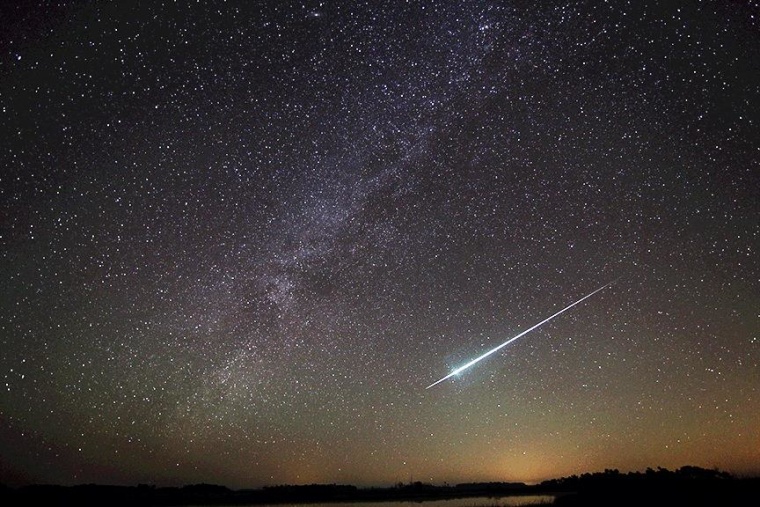The Ursid meteor shower peaks tonight, and it should be a great show.
When skywatchers think of meteor showers during the month of December, the Geminid shower (which peaked earlier this month) usually comes to mind. But the Ursid meteor shower — peaking tonight and into the wee hours of Tuesday (Dec. 23) morning — should also offer skywatchers a good view this year.
Even if you can't see tonight's meteor shower due to light pollution or bad weather, you can still catch the Ursids online thanks to the Slooh Community Observatory. Tune in for Slooh's Ursid meteor shower webcast tonight starting at 8 p.m. EST (0100 Dec. 23 GMT) live on Space.com. You can also watch the webcast directly through Slooh.

The Ursids are so named because they appear to fan out from the vicinity of the bright orange star Kochab, in the constellation of Ursa Minor, the Little Bear. Kochab is the brighter of the two outer stars in the bowl of the Little Dipper (the other being Pherkad), that seem to march in a circle like sentries around the North Star, Polaris. These meteors are sometimes called the Umids, in a rather unsuccessful attempt to make clear that their radiant is in Ursa Minor, not Ursa Major. [Take Space.com's meteor shower quiz]
The fact that Kochab is positioned so near to the north pole of the sky means that this star almost never sets for most viewers in the Northern Hemisphere. And since the Ursids seem to fan out from this particular region of the sky, you have a reference point to look for these faint, medium-speed meteors all through the night if you care to.
The fact that the shower peaks tonight is good news for observers braving the cold to see the display. The moon is just one day past its new phase, meaning that light reflected from Earth's natural satellite won't wash out the shower.
— Joe Rao, Space.com
Joe Rao serves as an instructor and guest lecturer at New York's Hayden Planetarium. He writes about astronomy for Natural History magazine, the Farmer's Almanac and other publications, and he is also an on-camera meteorologist for News 12 Westchester, N.Y.
This is an abbreviated version of a report from Space.com. Read the full report. Follow us @Spacedotcom, Facebook and Google+.